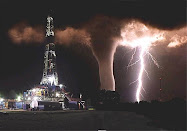Virus Evolution and Delta Variant
Kenn Brody
August 3, 2021
Evolution is an inexorable process that changes everything that can reproduce and exists in a competitive environment. I’m using this definition to avoid the question of whether a virus is a living thing or just a self-serving collection of organic material. Evolution doesn’t care either way. A virus evolves whether you call it alive or not.
How and why does a virus evolve?
Corona virus is an old species with hundreds, perhaps thousands, of members, many of which infect the cells of mammals. It is an obligate parasite. Without infection, without getting inside host cells, a virus does not have any activity. You can think of it as a seed in a suspended state. When it meets a nice, juicy mammal, however, it attaches itself to a cell though a spike mechanism. SARS-COVID-2 attaches to ACE2 receptors in human lungs and elsewhere. That attachment is like a key-and-lock mechanism, where a part of the virus actually locks onto a part of the ACE2 protein.
Once the attachment is made, the virus inserts its DNA into the cell. It looks like a molecular mosquito, injecting its replicating code into the host cell. That code takes over the machinery of the host cell to make more virus proteins, which assemble themselves into virions (virus particles). The cell soon explodes, releasing the new virions to infect other cells and repeat the process. The virus explodes so quickly in the host that the immune system cannot keep up. In a few hours there will be as many as 100 billion virions produced from just a few hundred invaders. Each virion is a somewhere between 50 and 100 nanometers in size, much smaller than the pores on a cloth mask.
In time, the immune system will search out and destroy infected cells. Lymphocytes will remember parts of the invading virus for a faster defense in the future. This is called “natural immunity”.
In order to eliminate infected cells the immune system triggers cytokines in the cells. Cytokines trigger cell dissolution. Cytokines order the cell to commit suicide, or apoptosis. However, with COVID, the cytokines destroy much tissue and do not always stop with infected cells. A cytokine storm is the hyperactive immune system damaging tissue after the virus has been cleared. It’s the cytokine storm that kills lung tissue, heart linings and other organs. It’s the cytokine storm that kills patients in the IC wards.
This life cycle and the conditions inside a host are the things that define whether a virus is successful at reproducing itself or whether it fizzles out as isolated infections. A map of the world a virus competes in is called a fitness map. The fitness map has peaks and valleys. Fitness includes characteristics like how contagious it is (R0), how resistant it is to antibiotics, antiviral agents and vaccines, and how fast it is at creating new virions. Obviously, any successful virus needs a lot of hosts. Therefore, killing a host is not a benefit to a virus, like COVID, that needs a living host to reproduce. A virus evolves to reach the highest peak in that fitness map.
Every virus is competing on that fitness landscape to reach the peaks, where it will have the most offspring, not the most host deaths, not the worst host symptoms.
The entire genome is about 30,000 base pairs, tiny compared to mammalian cells. Virions outside the host are very fragile. COVID survives perhaps an hour in air, less in sunlight. Virions are also subject to bombardment by radiation, ultraviolet, and chemical agents. These cause random changes in the viral DNA. Most of these mutations are neutral or fatal for the individual virion, but there are so many virions that by the odds some mutations are beneficial to the virus. So we get lots of variants. WHO and CDC classify variants of note, listing about 20 of them in categories according to levels of concern. They are now labelled with Greek letters: alpha, delta, lambda, etc. Alpha is the initial variant. Delta evolved from Alpha. The difference between apha and delta is only a handful of mutations, or SNPs.
Now alpha and delta are competing variants in the same fitness landscape. But that landscape has changed. Most human hosts are now immune to apha, either due to vaccines or natural immunity. We are slightly less immune to delta, so delta has the advantage in available hosts and rapidly overtakes alpha as the predominant variant. Delta is also more contagious and much less likely to kill its hosts, both significant advantages if you are a virus. This is the usual way a virus evolves – more contagious, less lethal.
The current high level of vaccinations and the huge population of humans creates an ideal situation for COVID mutations. The older variants die out for lack of easily infectable hosts, but there are so many quintillions of particles out there the possible mutations are high and each gets a chance at finding a peak in the fitness landscape. So the number of variants will continue to increase.
The usual rtPCR test that is currently the gold standard for COVID testing cannot distinguish among these variants. Neither can the rapid tests. A small sampling of tests is sent to specialized labs for sequencing, a two-week process. Only sequencing can determine which variant is most common in a region. Th United States has sequenced only 51,000 out of about 400 million COVID tests. It does not yield a very detailed picture of variant spread. This is the entire basis for making decisions about masking, vaccination mandates and lockdowns.
Will COVID mutations stop? Not as long as the virus persists in the population. Not as long as evolution of the fitness landscape closes old niches and opens new ones. There will be ever newer variants and possibly new vaccines to answer them until the virus simply becomes one more flu-like nuisance.
References:
https://www.ncbi.nlm.nih.gov/pmc/articles/PMC7224694/
https://www.cdc.gov/coronavirus/2019-ncov/variants/variant-info.html
https://www.nature.com/articles/s42003-021-01754-6



No comments:
Post a Comment